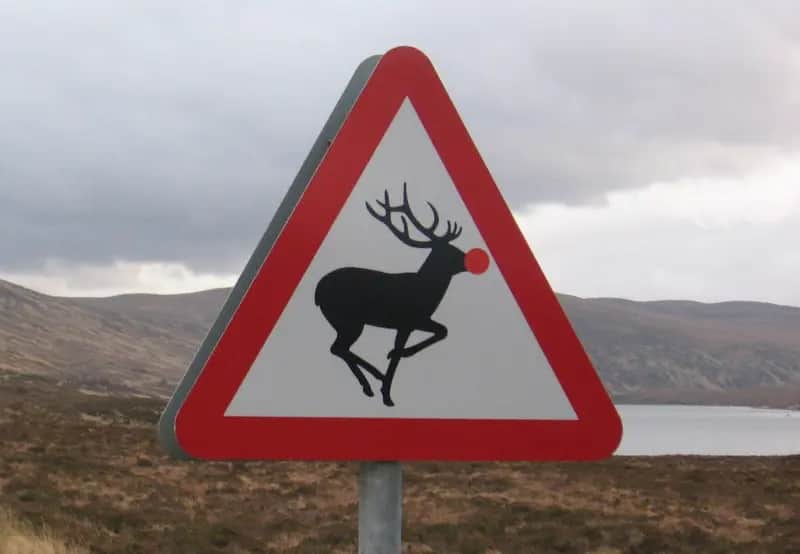ON A SCALE OF ZERO TO 12, HOW WELL DO YOU KNOW YOUR WIND SPEEDS?

RIPPLE EFFECT: A blowy day on the waters of Lochan na h-Earba on the way in to the Ardverikie Munros

AFTERMATH: Storm damage
WE had struggled on along the ridge despite the unrelenting battering we were taking from the wind but now we were on our knees.
Standing up was difficult, walking near impossible, so we crawled to the shelter of some rocks to regroup. And then we saw the dog flying.
Scoop, our faithful four-legged mountain companion in the early years, was caught by one gust and lifted a few feet to the left. He managed to make it over to us, whimpering and whining. That made up our minds – we were getting off the hill.
High winds had been forecast but this was far, far worse than predicted. The wind was channelling its force straight at us. It had been building in strength from the start of the walk, and by the time we were high on the wide ridge it had reached a screaming crescendo.
At first, we were convinced this was just a blip and it would soon ease. It didn't. It just got worse. And by the time the dog was turned into a kite, the only option was to abandon our ambitions of two more Munro ticks and get to safety. This was back in the early 90s and it is still the worst wind I have encountered on the hill.
Just a couple of years ago, myself and two companions fought our way up the north ridge of Beinn Teallach using the rocks as relief from ferocious gusts which knocked us sideways, but we never doubted we would make it to the summit.
The only casualty that day was my rucksack cover which was torn away, last seen heading for Fort William at high speed.
I expect the majority of walkers reckon high winds are the most unpleasant mountain conditions – especially when accompanied by heavy snow or rain - and gauging just where the limits of your comfort zone are can be difficult.
Current wind forecasts are based on the Beaufort Scale, a system originally designed for maritime conditions back in the 1800s and which has been adapted and adjusted over the years to become the main source of comparison for wind speeds.
So, on a scale of 0 to 12, how well do you know your wind conditions? Here's a few pointers but the rest is up to you:
0 - Calm air (0-1mph):
Water like glass, smoke rises straight. A rare event in Scotland, as likely as spotting the Loch Ness Monster.
1 - Light air (2-3):
Ripples on the water, smoke drifts in wind direction. No real effect on walking but you may become irritated by anyone in your party smoking.
2 - Light breeze (4-7):
Rustling leaves, swaying grass, small wavelets on water. You feel the wind on your face.
3 - Gentle breeze (8-12):
Leaves and twigs move, whitecaps on water, hair ruffled, loose clothing flaps and temporary blindness can be caused by untethered straps smacking you in the eye.
4 - Moderate Breeze (13-18):
Tree branches sway, small dust devils form, small waves and whitecaps and your nice new hairstyle is disarranged. Baldies strut around looking smug.
5 - Fresh Breeze (19-24):
Small trees sway, walking takes more effort. Weatherman Windy Wilson starts getting interested.
6 - Strong Breeze (25-31):
Large trees move, whistling can be heard through the foliage, spray blows off water, steady walking becomes difficult.
7 - Near gale (32-38):
Trees bend and sway en masse, constant buffeting, rucksack covers, map cases and loose items of clothing can suddenly disappear.
8 - Gale (39-46):
Branches snap off trees, walking extremely difficult, even dangerous. Ferries disrupted, bridges closed to high vehicles.
9 - Strong gale (47-54):
Whole trees sway, debris blown around, heavy spray on water, walking – and talking - near impossible, even crawling is difficult. Time to retreat.
10 - Storm (55-63):
Trees torn up, widespread damage, progress impossible even by crawling. Not conditions for a stroll unless you are a Shetlander.
11 - Violent Storm (64-71):
Trees uprooted, severe damage, mountainous waves. You would have to be slightly unhinged to consider going out in this.
12 - Hurricane (72+):
Batten down the hatches. High probability of serious damage to landscape and buildings.
*The scale is sometimes rated up to 17 in certain parts of the world - for instance the Caribbean, South-east Asia, Outer Hebrides - to grade strength of hurricanes and typhoons.

